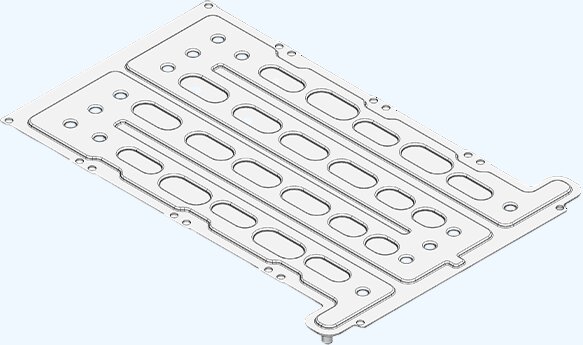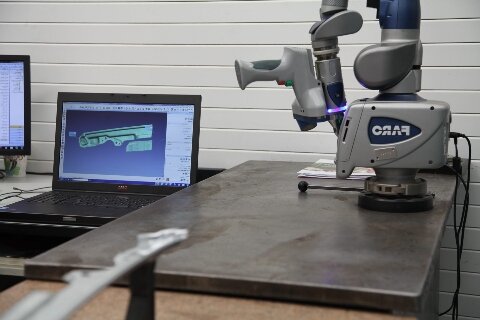La fresatura piana è uno dei metodi più utilizzati nella lavorazione meccanica. Che siate progettisti, ingegneri o produttori, dovete conoscere questo processo e capire come può essere vantaggioso per le vostre operazioni. Con la fresatura piana è possibile ottenere un'efficiente asportazione di materiale, ma ci sono sfide e considerazioni da considerare. In questo articolo si analizzerà come funziona e perché è una tecnica cruciale per vari progetti.
Questo metodo può sembrare semplice, ma svolge un ruolo fondamentale nella produzione. È fondamentale per produrre pezzi con finiture uniformi. Vediamo quindi più da vicino i tipi di fresatura piana e confrontiamoli con altri metodi di lavorazione.
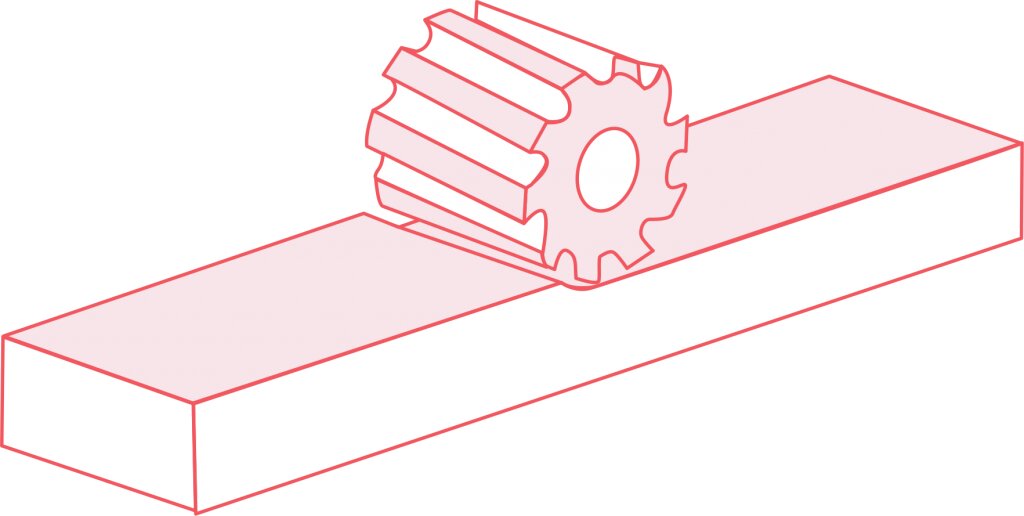
Che cos'è la fresatura piana?
La fresatura piana è un processo di lavorazione in cui una fresa rotante si muove su un pezzo per rimuovere materiale e creare una superficie piana. Questa operazione viene eseguita per lo più con fresatrici orizzontali, ma in alcuni casi si possono usare anche macchine verticali. L'obiettivo principale della fresatura piana è quello di levigare la superficie o tagliare scanalature.
La fresatura piana utilizza un utensile rotante per incidere il materiale. Quando la fresa ruota, si muove lungo la superficie del pezzo, che viene alimentato in direzione opposta. Regolando la velocità e la profondità del taglio, gli operatori possono creare finiture lisce e uniformi. Questo processo è ideale per realizzare superfici piane o scanalature.
Tipi di frese lisce
Le frese piane sono fondamentali per ottenere precisione ed efficienza nella lavorazione. Approfondiamo i diversi tipi di frese.
Frese piane per impieghi gravosi
Le frese lisce per impieghi gravosi sono costruite per lavori di lavorazione robusti e di grandi dimensioni. Vengono utilizzate quando è necessario rimuovere rapidamente grandi quantità di materiale. Queste frese sono solitamente realizzate con materiali resistenti come l'acciaio ad alta velocità (HSS) o il carburo.
Le frese per impieghi gravosi sono ideali per tagliare metalli duri o pezzi di grandi dimensioni. I denti di queste frese sono ampiamente distanziati per rimuovere efficacemente i trucioli e prevenire l'intasamento.
Frese per fresatura piana per impieghi leggeri
Le frese lisce per impieghi leggeri sono utilizzate per compiti meno impegnativi. Sono progettate per la precisione e funzionano bene con pezzi più piccoli o materiali più morbidi. Queste frese hanno denti più fini e sono spesso utilizzate per lavori che richiedono una finitura di alta qualità.
Sono ideali per i lavori in cui è necessario rimuovere solo una piccola quantità di materiale e una superficie più liscia. Le frese per impieghi leggeri sono solitamente realizzate con materiali come l'HSS e sono comunemente utilizzate nei settori che privilegiano la precisione.
Processo di fresatura semplice: Una descrizione passo per passo
Il processo di fresatura semplice prevede diverse fasi critiche per garantire precisione e qualità. Passiamo in rassegna ogni fase, dall'impostazione alla finalizzazione.
Fase 1: Preparazione e impostazione
Prima di iniziare il processo di fresatura, il pezzo da lavorare deve essere posizionato in modo sicuro sulla macchina. La messa a punto assicura che il pezzo sia allineato correttamente e che tutti gli utensili e i materiali siano pronti.
Fase 2: Impostazioni dell'utensile e della macchina
Successivamente, l'operatore regola la fresatrice per soddisfare le specifiche richieste. Ciò comprende la scelta della fresa giusta in base al materiale e al risultato desiderato, l'impostazione della velocità corretta e la regolazione della velocità di avanzamento.
Fase 3: fresatura del pezzo
Una volta impostato il tutto, la fresa inizia a lavorare. Si muove lungo il pezzo da lavorare, rimuovendo il materiale a ogni passaggio.
Fase 4: raffreddamento e rimozione dei trucioli
La fresatura genera calore, quindi i metodi di raffreddamento come i fluidi refrigeranti o i getti d'aria abbassano la temperatura e prevengono i danni all'utensile. Anche i trucioli prodotti durante la fresatura vengono rimossi per evitare di bloccare il processo di taglio e mantenere la superficie pulita.
Fase 5: Finalizzazione del processo di fresatura
Una volta ottenuta la finitura superficiale desiderata, il processo di fresatura è concluso. Le regolazioni o i processi aggiuntivi, come sbavaturaper garantire che il prodotto finale soddisfi le specifiche richieste.
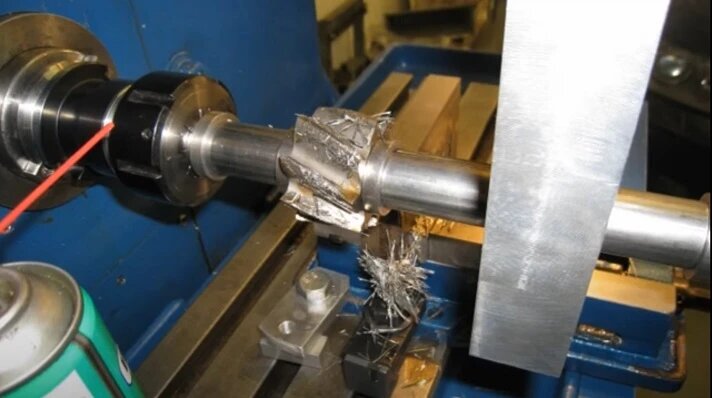
Vantaggi e svantaggi della fresatura piana
La fresatura piana presenta numerosi vantaggi ma anche alcuni svantaggi. La comprensione di entrambi può aiutarvi a decidere quando è la scelta giusta per le vostre esigenze di lavorazione.
Vantaggi
- Rimozione efficiente del materiale: La fresatura piana consente una rapida asportazione del materiale, soprattutto con le frese per impieghi gravosi. Ciò la rende ideale per i pezzi più estesi e semplici.
- Versatilità: Lavora su diversi materiali, come metalli, plastica e legno. Questo la rende un'opzione flessibile per molti tipi di progetti.
- Conveniente: Con una configurazione adeguata, la fresatura semplice è un'opzione conveniente per la produzione di massa e per i grandi lotti. Contribuisce a ridurre i tempi e i costi per unità.
- Precisione: Quando si utilizzano attrezzature e strumenti ben calibrati, la fresatura piana offre un'elevata precisione. È eccellente per creare superfici lisce e piatte.
Svantaggi
- Limitato alle superfici piane: La fresatura piana è utilizzata principalmente per creare superfici piane. Non è adatta a forme più complesse o a contorni 3D.
- Finitura superficiale: Pur offrendo buoni risultati, la finitura superficiale potrebbe non essere liscia come quella di altri metodi. Per i dettagli più fini possono essere necessarie ulteriori fasi di finitura.
- Usura degli utensili: La fresa può usurarsi rapidamente, soprattutto quando si lavora con materiali duri o durante la fresatura pesante. Ciò può comportare costi di manutenzione e sostituzione più elevati.
- Limitazioni sulle dimensioni: La capacità della macchina limita le dimensioni del pezzo. Ciò rende la fresatura semplice meno ideale per i componenti più grandi o più voluminosi.
Fattori che influenzano l'efficienza della macinazione piana
L'efficienza della fresatura semplice dipende da diversi fattori chiave. Vediamo come la velocità, l'avanzamento, la stabilità della macchina e la manutenzione dell'utensile contribuiscono a ottimizzare questo processo di lavorazione.
Il ruolo della velocità, dell'avanzamento e della profondità di taglio
La velocità di taglio controlla la velocità di rotazione della fresa, che influisce sulla rapidità di asportazione del materiale. La velocità di avanzamento si riferisce alla velocità con cui il pezzo si muove nella fresa. Ciò influenza sia la finitura superficiale che la forza di taglio. La profondità di taglio determina la quantità di materiale rimosso in una sola passata.
Importanza della rigidità e della stabilità della macchina
Una macchina rigida aiuta a prevenire le vibrazioni durante la fresatura, consentendo alla fresa di lavorare in modo efficiente e di produrre risultati accurati. Se la macchina è instabile o si flette, può causare errori nel prodotto finale e un'usura più rapida degli utensili.
Usura e manutenzione degli utensili nella fresatura piana
L'usura degli utensili è una componente naturale della fresatura semplice, ma la manutenzione può ridurne l'impatto. Man mano che la fresa lavora, perde gradualmente l'affilatura, rendendo meno efficace il taglio. Ispezioni regolari e la sostituzione degli utensili, quando necessario, aiutano a mantenere il processo di fresatura senza intoppi e a garantire i migliori risultati.
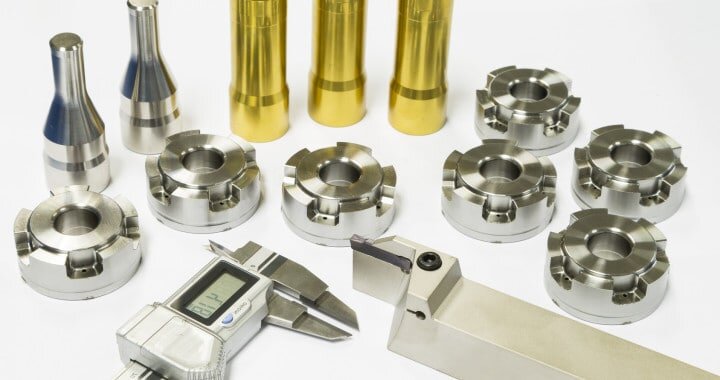
Fresatura piana vs. altri processi di fresatura
Ogni processo di fresatura ha i suoi punti di forza e le sue applicazioni specifiche. Confrontiamo la fresatura semplice con altri metodi standard per comprenderne meglio le differenze e scegliere quello giusto per il vostro progetto.
| Processo di fresatura | Scopo | Posizione dello strumento | Direzione di taglio | Il miglior caso d'uso |
|---|---|---|---|---|
| Fresatura semplice | Si usa per creare superfici piane e scanalature. | L'utensile ruota orizzontalmente sul pezzo. | L'utensile taglia lungo la superficie, rimuovendo il materiale in modo uniforme. | Rimozione di materiale su larga scala con minore necessità di precisione. |
| Fresatura frontale | Si usa per creare superfici piane, spesso con una finitura più liscia. | L'utensile ruota perpendicolarmente alla superficie del pezzo. | L'utensile taglia la superficie per migliorare la finitura. | Maggiore precisione e finiture più uniformi. |
| Fresatura di scanalature | Utilizzato per creare scanalature, solchi e altre caratteristiche interne. | L'utensile ruota orizzontalmente e taglia gli elementi interni. | L'utensile taglia lungo la parte interna del pezzo. | Creazione di elementi interni come scanalature e fessure. |
| Fresatura di superficie | Utilizzato per la finitura di superfici piane e per migliorare la qualità della superficie. | L'utensile ruota perpendicolarmente, concentrandosi sulla finitura delle superfici del pezzo. | L'utensile rimuove il materiale per affinare le superfici piane. | Lavori di finitura per ottenere una finitura superficiale di alta qualità. |
Applicazioni comuni della fresatura piana
La fresatura piana è essenziale in vari settori per creare componenti precisi. Esploriamo le sue applicazioni principali in vari settori.
Industria aerospaziale
Nell'industria aerospaziale, la fresatura piana crea superfici precise e piatte su parti critiche come le ali degli aerei, i componenti della fusoliera e le parti del motore. Questi componenti richiedono tolleranze strette e finiture lisce per garantire prestazioni e sicurezza.
Industria automobilistica
La fresatura piana è utilizzata nel settore automobilistico per produrre parti di motore, componenti di trasmissione e altri sistemi meccanici. Contribuisce a produrre pezzi con superfici lisce e precise, che sono fondamentali per le prestazioni e l'affidabilità del veicolo.
Industria di costruzioni
Nell'industria delle costruzioni, la fresatura piana crea superfici piane su componenti strutturali quali travi, colonne e cornici. Viene spesso utilizzata per rimuovere grandi quantità di materiale e preparare le parti per un'ulteriore lavorazione o Assemblea.
Industria medica
L'industria medica utilizza la fresatura piana per realizzare componenti precisi per dispositivi medici, strumenti chirurgici e impianti. La fresatura piana assicura che questi componenti soddisfino le specifiche esatte e abbiano superfici lisce, essenziali per la funzionalità e la sicurezza.
Conclusione
La fresatura piana è un processo di lavorazione flessibile ed efficiente utilizzato per creare con precisione superfici piane e scanalature. È fondamentale per produrre componenti di alta qualità in settori come quello aerospaziale, automobilistico, edile e medicale.
Se volete sapere come la fresatura piana può migliorare la vostra produzione, contattateci per ulteriori informazioni o per un preventivo personalizzato. Siamo qui per aiutarvi a rendere più efficiente il vostro processo produttivo!
Ciao, sono Kevin Lee

Negli ultimi 10 anni mi sono immerso in varie forme di lavorazione della lamiera, condividendo qui le mie esperienze in diverse officine.
Contattate

Kevin Lee
Ho oltre dieci anni di esperienza professionale nella fabbricazione di lamiere, con specializzazione nel taglio laser, nella piegatura, nella saldatura e nelle tecniche di trattamento delle superfici. In qualità di direttore tecnico di Shengen, mi impegno a risolvere sfide produttive complesse e a promuovere innovazione e qualità in ogni progetto.

